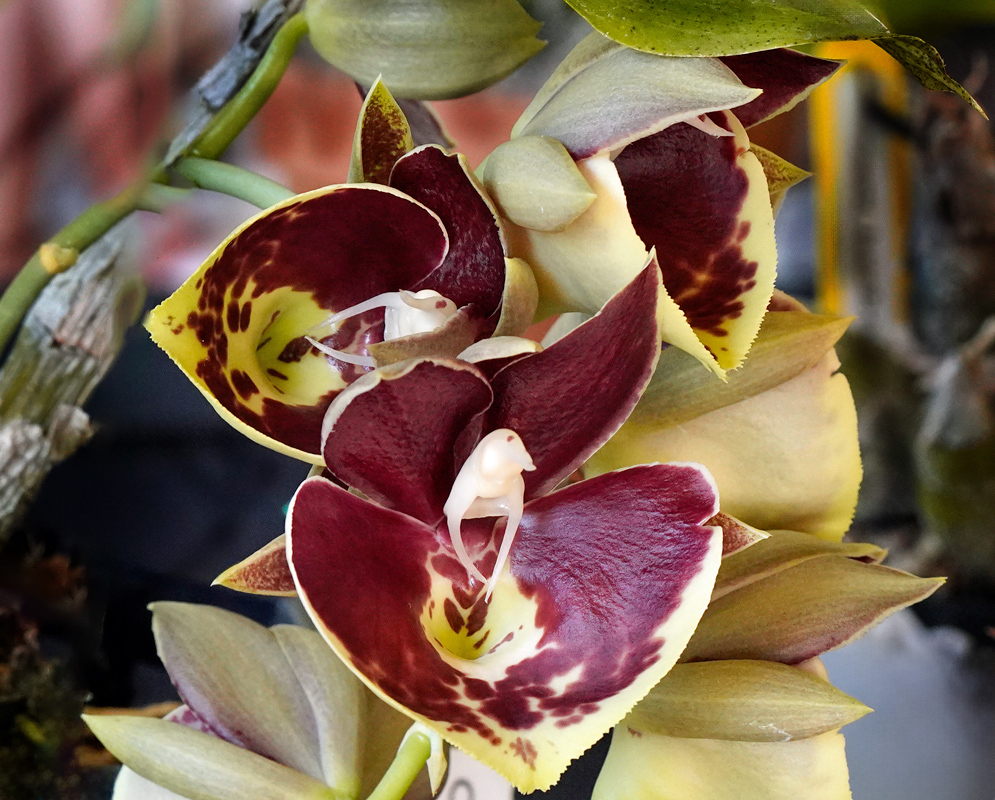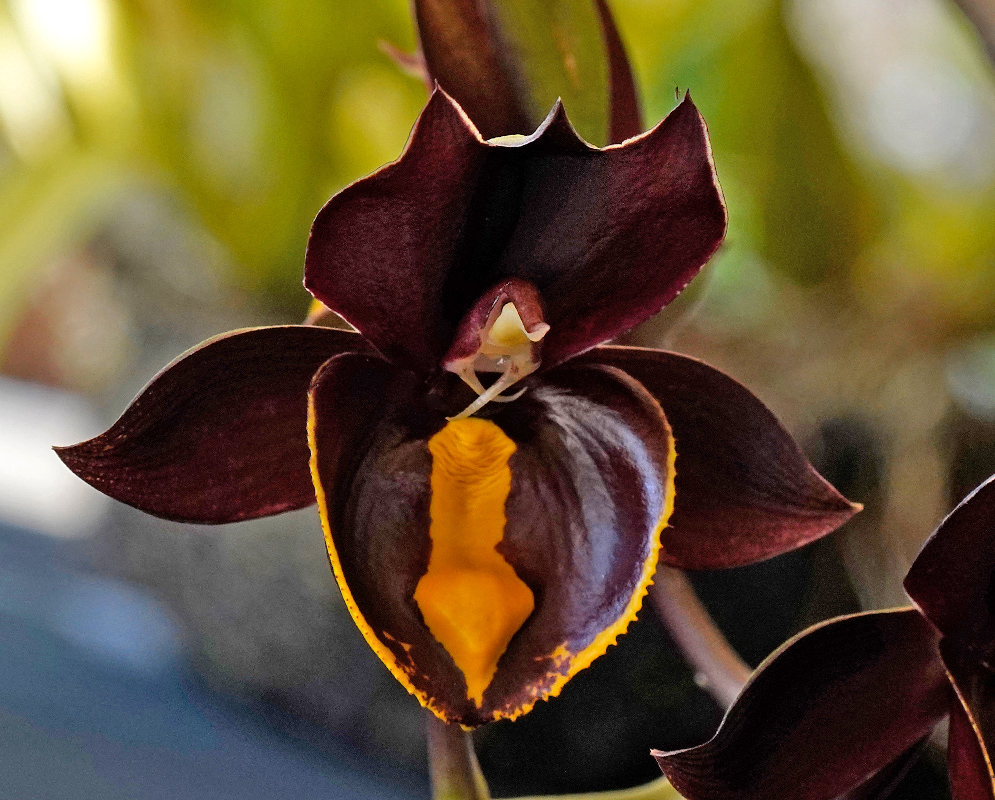This post has 11 Simple Fields-fields attached. Show fields.

Originating from the tropical Americas, catasetum occurs from southern Mexico through Central America into the Amazon Basin and north-central South America, especially in lowland, seasonally dry forests where it grows as a deciduous epiphyte on tree trunks. Plants produce cigar-shaped pseudobulbs that leaf out with the rains, then drop their foliage in the dry season; the growth cycle drives culture under cultivation—heavy water and feed while in leaf, then a dry rest once leaves yellow and fall. Many cultivated plants are named hybrids selected for large, thick flowers with bold two-tone patterns; the hybrid retains the genus’ distinctive architecture: a broad, cupped lip, stout lateral segments, and a protruding column bearing trigger hairs. Catasetum is notable among orchids for sexual dimorphism—male and female flowers look different on the same plant—and for an unusual pollination mechanism. In male flowers, a touch to the sensitive setae fires the pollinarium onto a visiting insect with measurable force; the feature is visible here as the pale “beak-like” column centered in the bloom. Flowering typically occurs on leafed growths from late spring to fall, with many clones releasing a strong daytime fragrance. Inflorescences can carry numerous fleshy flowers that open successively, each often spanning around 2 to 3 inches. Photographed in Florida.



